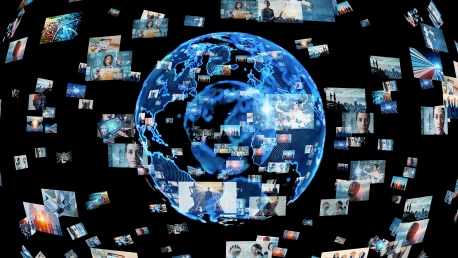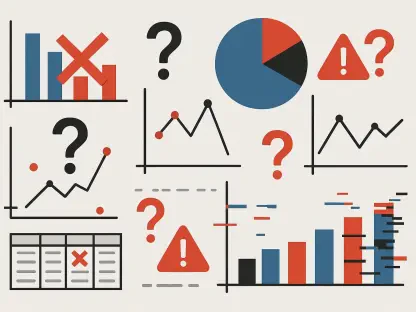The realm of content production is transforming substantially due to breakthroughs in text-to-video AI technologies. Previously, these tools could only create rudimentary videos, but now they are capable of crafting visuals that are impressively lifelike and creatively varied. This progress mirrors the surging advancements in AI across various sectors and signals a revolution in the way we generate and engage with visual content.As AI continues to advance, it’s influencing the way videos are created, ushering in tools that convert written text into complex and artistic video content. The implications of this technological leap are vast, promising changes in the production speed and style of visual media, and potentially altering the landscape for creators, marketers, and audiences alike. As we stand on the cusp of this transformative era, the potential for AI to democratize and innovate the field of content creation is both exciting and monumental.
State-of-the-Art Text-to-Video AI Models
OpenAI’s Sora: Emotionally Expressive AI
OpenAI’s Sora represents a breakthrough in AI technology with its nuanced language abilities and its flair for creating emotionally resonant video content. This cutting-edge tool is breaking new ground in storytelling, forging real connections with audiences. Despite its innovative capabilities, Sora is not without its challenges. The model currently struggles with providing consistent outputs and achieving accurate alignment with users’ intents.The tech community watches in anticipation as developers work to refine Sora’s performance. There is a sense that Sora will make a monumental stride in the AI field once the existing wrinkles are smoothed out and robust safety protocols are put in place. This next phase of development is expected to enhance Sora’s reliability, turning it into an even more powerful tool for crafting compelling narratives with ease.
Google’s Lumiere: Mastering Space-Time Dynamics
Google’s Lumiere is reshaping the AI video production landscape through its innovative approach. Traditional methods stitch static images to create videos, but Lumiere’s Space-Time-U-Net (STUNet) technology simultaneously considers spatial and temporal dynamics, offering a more seamless and dynamic video generation process. This cutting-edge technique promises to boost Google’s influence in AI video tech, as industry watchers keenly anticipate its potential impact. Lumiere is not just a novelty; it signifies a potential industry transformation, as it streamlines the creation of more lifelike and fluid video content that could revolutionize storytelling and content creation across various platforms. With its advanced diffusion process, Google’s Lumiere is setting a new standard for AI-driven video production, heralding a future where AI-generated videos are indistinguishable from those shot by human videographers.
VideoPoet: A Harmonious Multimedia Symphony
VideoPoet leverages a cutting-edge language model, developed with a vast dataset including videos, photographs, audio clips, and written text. This model utilizes multiple tokenizer algorithms to transform these diverse media forms into a unified ‘language.’ Such a transformation allows for the application of autoregressive language models that are proficient in generating videos with narrative coherence and smooth transitions.The innovation of VideoPoet lies in its ability to create videos with seamless narrative flow, thanks to its training on a wide array of media inputs. This gives it the flexibility to handle various video creation tasks with commendable dexterity. Its strength in crafting transitions and constructing stories within videos sets it apart, showcasing its advanced capabilities in the realm of video synthesis. In essence, VideoPoet represents a significant stride in the field of media generation, facilitating seamless integration of different forms of media into a single video narrative.
Disruptive Innovations in Video Generation
Meta’s Emu Video: The Human Preference
Meta’s Emu Video technology has garnered attention for its remarkable capability to transform written prompts into vivid images, which then unfold into dynamic videos. This innovation is particularly appreciated by human evaluators for its resonance with human perception. Emu Video’s superior performance is attributed to advanced noise schedule optimizations and a multi-stage training approach. The system’s strength lies in its exceptional ability to interpret text into visual narratives in a manner that mirrors the human imaginative process. This remarkable alignment allows Emu Video to effectively encapsulate the subtleties of human storytelling, striking a chord with our innate preference for narrative coherence and visual representation. By bridging the gap between textual description and visual perception, Emu Video captures the essence of stories, making abstract concepts more concrete and emotionally engaging through transformative visual sequences.
Phenaki Video: Crafting Extended Narratives
Phenaki Video harnesses the advanced capabilities of Mask GIT to generate long-form, text-directed videos, extending durations into minutes. This innovation permits a sequential training strategy, starting with text-to-image before venturing into the more demanding realm of text-to-video, which enhances the accuracy and storytelling flow of the AI. The integration of a supplementary critic within the sampling stage marks a significant step forward in AI-driven narrative creation. This supplementary critic functions to refine the model’s output, ensuring that the generated videos are not only longer but also maintain a coherent storyline in alignment with the guiding text. This novel technique enriches the AI’s understanding of narratives, offering potential breakthroughs in automated video production with a robust emphasis on storytelling coherence. Consequently, Phenaki Video’s approach is set to expand the horizons for AI in the field of creative video storytelling.
Tsinghua University’s CogVideo: Unleashing Creative Potential
Tsinghua University has made strides in AI-generated media with its new CogVideo system, building on the capabilities of its predecessor, CogView2. This advanced text-to-image model can now craft dynamic video content, capturing the attention of artists and filmmakers. CogVideo’s prowess in creating detailed visual narratives is causing a ripple in the film industry, hinting at a shift in how creative responsibilities are allocated. The technology suggests that AI may soon take on elements of storytelling and visualization traditionally managed by human directors and cinematographers. As a result, the landscape of content creation could be redefined, with artificial intelligence becoming an integral collaborator in the artistic process. This evolution points toward a blend of human ingenuity and machine efficiency that could redefine the production of visual media.
Capabilities and Challenges of AI-Driven Video Production
Advancements in Efficiency and Creative Possibilities
AI-generated video production is revolutionizing content creation, marrying increased efficiency with boundless creativity. The advent of text-to-video models has propelled this medium from whimsical to essential, as it now offers the power to quickly prototype and craft distinct visuals in a plethora of artistic styles. This technological leap suggests that AI’s role in video production is not only transformative but is quickly becoming vital for creators in multiple fields. It streamlines the creative process, condensing hours of work into moments and pushing the boundaries of imagination. As these tools evolve, their evolving sophistication makes them more than mere assistants; they are becoming co-creators, integral to the artistic journey. This shift promises to redefine the landscape of visual storytelling, ensuring that AI will soon be an irreplaceable asset in a creator’s toolkit.
Navigating Skepticism and Ethical Considerations
Despite the advancements of text-to-video AI technology, the industry remains cautious. There’s a keen awareness that the progression of these tools is not just a technical matter but also a complex web involving safety and ethics. As AI becomes increasingly woven into the fabric of creative processes, the conversations about its broader impact grow more urgent. It’s essential that those shaping the future of AI uphold a balance where technology enhances, rather than diminishes, human creativity and autonomy. The challenge lies not only in achieving technological feats but also in navigating the terrain of moral responsibility. As AI stakes its claim in our daily lives, the responsibility to govern its influence becomes a pressing mandate for its proponents, ensuring it serves as a complement to human endeavor, not a competitor.









